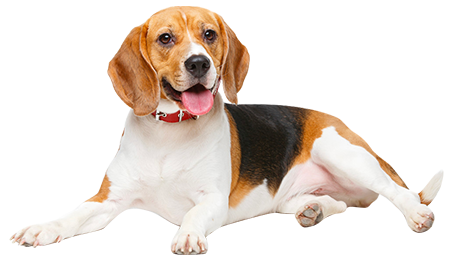Why Raw Meat Dog Food is the Best Choice for Canine Nutrition
Why Raw Meat Dog Food is the Best Choice for Canine Nutrition
Table of Contents
1. Introduction to Canine Nutrition
2. Understanding Raw Meat Dog Food
3. Nutritional Benefits of a Raw Meat Diet
3.1 High-Quality Protein Sources
3.2 Essential Vitamins and Minerals
3.3 Improved Digestion
3.4 Healthy Skin and Coat
4. Common Misconceptions About Raw Meat Diets
5. How to Transition Y
2025/03/20
Why Raw Meat Dog Food is the Best Choice for Canine Nutrition
Table of Contents
1. Introduction to Canine Nutrition
2. Understanding Raw Meat Dog Food
3. Nutritional Benefits of a Raw Meat Diet
3.1 High-Quality Protein Sources
3.2 Essential Vitamins and Minerals
3.3 Improved Digestion
3.4 Healthy Skin and Coat
4. Common Misconceptions About Raw Meat Diets
5. How to Transition Your Dog to Raw Meat Food
5.1 Gradual Introduction
5.2 Monitoring Your Dog's Health
6. The Best Raw Meat Options for Dogs
7. Conclusion
8. FAQs
1. Introduction to Canine Nutrition
In recent years, dog owners have become increasingly aware of the importance of proper nutrition in maintaining their canine companions' health and vitality. Traditional kibble and commercial dog foods often contain fillers and preservatives that may not support optimal health. As a result, many pet owners are exploring raw meat dog food as a natural alternative that mimics the diets of dogs' wild ancestors.
2. Understanding Raw Meat Dog Food
Raw meat dog food typically consists of uncooked meat, bones, organs, and sometimes fruits and vegetables. This diet aims to provide dogs with a biologically appropriate food source, reflecting what they would naturally consume in the wild. The raw food movement has gained popularity among dog enthusiasts, who assert that this diet can lead to improved health and longevity for their pets.
3. Nutritional Benefits of a Raw Meat Diet
A raw meat diet offers several key nutritional advantages for dogs. Let's delve deeper into these benefits:
3.1 High-Quality Protein Sources
Protein is essential for a dog's growth, repair, and overall health. Raw meat provides high-quality protein that helps build and maintain strong muscles. Unlike processed dog foods, which may include lower-quality protein sources, raw meat ensures that your dog receives the nutrients necessary for optimal development.
3.2 Essential Vitamins and Minerals
Raw meat diets are rich in essential vitamins and minerals that promote optimal health. For instance, organ meats such as liver are packed with vitamins A, D, E, and K, as well as essential fatty acids that can contribute to your dog’s overall well-being. These nutrients support healthy immune function, vision, and skin health.
3.3 Improved Digestion
Many dog owners report that their pets experience improved digestion after switching to a raw meat diet. Raw food contains natural enzymes that aid digestion, while the absence of fillers and artificial additives means that dogs can absorb nutrients more effectively. This can lead to firmer stools and reduced incidence of gastrointestinal issues.
3.4 Healthy Skin and Coat
A raw meat diet can significantly enhance the condition of your dog’s skin and coat. The healthy fats found in raw meat contribute to a shiny, lustrous coat and reduced itching or dryness. Many pet owners have noticed a marked improvement in their dog’s skin health after making the switch to a raw diet.
4. Common Misconceptions About Raw Meat Diets
Despite the numerous benefits, some misconceptions surround raw meat dog food. It’s essential to address these to help pet owners make informed decisions:
- **Raw Diets Are Dangerous:** Many people believe that raw meat poses a health risk due to potential pathogens. However, healthy dogs typically have strong immune systems that can handle bacteria found in raw meat. Practicing safe food handling and sourcing high-quality meat can mitigate these risks.
- **Dogs Need Grain:** Contrary to popular belief, dogs are not obligate carnivores. They can thrive on a primarily meat-based diet, and many dogs actually experience health improvements when grains are removed from their diets.
- **Raw Diets Are Too Expensive:** While some may perceive raw meat diets as costly, they can be more economical in the long run. Investing in quality raw food can lead to reduced veterinary bills due to improved health and fewer diet-related issues.
5. How to Transition Your Dog to Raw Meat Food
Transitioning your dog to a raw meat diet should be done gradually to ensure their digestive system adapts properly. Here’s how to make the switch effectively:
5.1 Gradual Introduction
Start by incorporating small amounts of raw meat into your dog's existing food. Gradually increase the proportion of raw meat over a week or two. Monitor your dog's reaction and adjust accordingly. Some dogs may take longer to adjust, so be patient throughout the process.
5.2 Monitoring Your Dog's Health
During the transition, keep a close watch on your dog's health. Look for any changes in energy levels, stool consistency, and overall behavior. If you notice any adverse reactions, consult your veterinarian for guidance.
6. The Best Raw Meat Options for Dogs
When selecting raw meat for your dog, it’s crucial to choose high-quality sources. Here are some of the best options:
- **Beef:** A versatile protein source that is rich in nutrients. Ground beef, chunks, and organs like liver can be excellent additions to your dog’s diet.
- **Chicken:** A popular choice among dog owners, chicken is generally more affordable and readily available. Ensure to include bones for calcium and dental health.
- **Turkey:** Another lean protein option, turkey is a good alternative for dogs that may have allergies to beef or chicken.
- **Fish:** Fish provides essential omega-3 fatty acids, which are beneficial for skin and coat health. Salmon, sardines, and mackerel are excellent choices.
- **Lamb:** This protein source is often ideal for dogs with food sensitivities, as it is less commonly used in commercial dog foods.
7. Conclusion
In conclusion, raw meat dog food can be a **superior choice** for canine nutrition, offering a plethora of health benefits, including better digestion, healthier skin and coat, and high-quality protein sources. Despite common misconceptions, many dogs thrive on raw diets, which reflect their natural feeding behaviors. By transitioning your dog gradually and selecting high-quality ingredients, you can provide them with a nutritious diet that supports their overall well-being. Embrace the raw food movement, and watch your canine companion flourish!
8. FAQs
1. Is raw meat dog food safe for all dogs?
While raw meat dog food can be beneficial for many dogs, it is crucial to consult your veterinarian before making any dietary changes, especially for dogs with underlying health issues.
2. How can I ensure my dog gets a balanced diet on a raw meat diet?
To ensure a balanced diet, include a variety of meats, organs, and bones, along with limited fruits and vegetables. Consulting with a veterinary nutritionist can also help create a well-rounded meal plan.
3. How do I store raw meat dog food?
Store raw meat dog food in the refrigerator or freezer, and ensure to thaw it safely before feeding. Always practice good hygiene to prevent cross-contamination.
4. Can raw meat diets cause behavioral changes in dogs?
Many dog owners report increased energy levels and improved mood in dogs after switching to a raw meat diet, likely due to better nutrition.
5. What should I do if my dog refuses to eat raw meat?
If your dog is reluctant to eat raw meat, try warming it slightly or mixing in a small amount of their favorite food. Gradual introduction is key to helping them adapt to the new diet.
Key words:
Previous Page:
Contact Us
Address:
No. 22, Jingxing Road, Economic and Technological Development Zone, Nantong, Jiangsu Province.
E-mail:
panghuiqiang@metzpet.com
Contact Phone:
+86-18862996617














